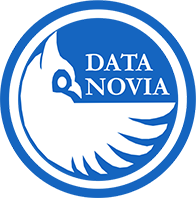Introduction
This guide is designed to help you quickly grasp the core concepts of programming so that you can begin writing code and building projects with confidence. In this article, we will cover the practical aspects of programming, focusing on the foundational elements that every beginner needs to know.
What Are Programming Fundamentals?
Programming fundamentals include the basic building blocks that allow you to write effective code. These concepts include:
Variables and Data Types:
Understanding how to store and manipulate data.Control Structures:
Using conditional statements and loops to control the flow of your program.Functions:
Organizing your code into reusable blocks that perform specific tasks.Basic Syntax and Conventions:
Learning the rules and best practices that keep your code clean and understandable.
Practical Examples
Let’s take a look at some simple examples in both Python and R to illustrate these fundamental concepts.
Variables and Data Types
# Python: Variables and Data Types
name = "Alice"
age = 30
height = 5.5
is_student = True
print("Name:", name)
print("Age:", age)
print("Height:", height)
print("Is Student:", is_student)# R: Variables and Data Types
name <- "Alice"
age <- 30
height <- 5.5
is_student <- TRUE
print(paste("Name:", name))
print(paste("Age:", age))
print(paste("Height:", height))
print(paste("Is Student:", is_student))Control Structures
# Python: Conditional Statement and Loop
x = 10
if x > 5:
print("x is greater than 5")
else:
print("x is 5 or less")
for i in range(3):
print("Iteration", i)# R: Conditional Statement and Loop
x <- 10
if (x > 5) {
print("x is greater than 5")
} else {
print("x is 5 or less")
}
for (i in 1:3) {
print(paste("Iteration", i))
}Functions
# Python: Defining and Using a Function
def greet(name):
return f"Hello, {name}!"
print(greet("Alice"))# R: Defining and Using a Function
greet <- function(name) {
paste("Hello,", name, "!")
}
print(greet("Alice"))How to Use This Guide
Start by familiarizing yourself with these fundamental concepts. This overview provides a snapshot of the essential building blocks of programming. As you progress, you can explore more in-depth tutorials on specific topics in the Getting Started section, such as our comparative guide between Python and R or detailed instructions on setting up your development environment.
Conclusion
A strong grasp of programming fundamentals is the key to success in coding. By understanding how variables, control structures, and functions work, you’re well on your way to writing effective code and tackling more advanced projects. Use this guide as your stepping stone into the world of programming, and keep experimenting as you learn.
Further Reading
- What is Programming? A Comprehensive Introduction
- Essential Programming Concepts Every Beginner Should Know
- Python vs. R: Choosing the Right Tool
- Setting Up Your Development Environment
Happy coding, and welcome to your programming journey!
Explore More Articles
Here are more articles from the same category to help you dive deeper into the topic.
Reuse
Citation
@online{kassambara2024,
author = {Kassambara, Alboukadel},
title = {Overview of {Programming} {Fundamentals}},
date = {2024-02-01},
url = {https://www.datanovia.com/learn/programming/getting-started/overview-of-programming.html},
langid = {en}
}
